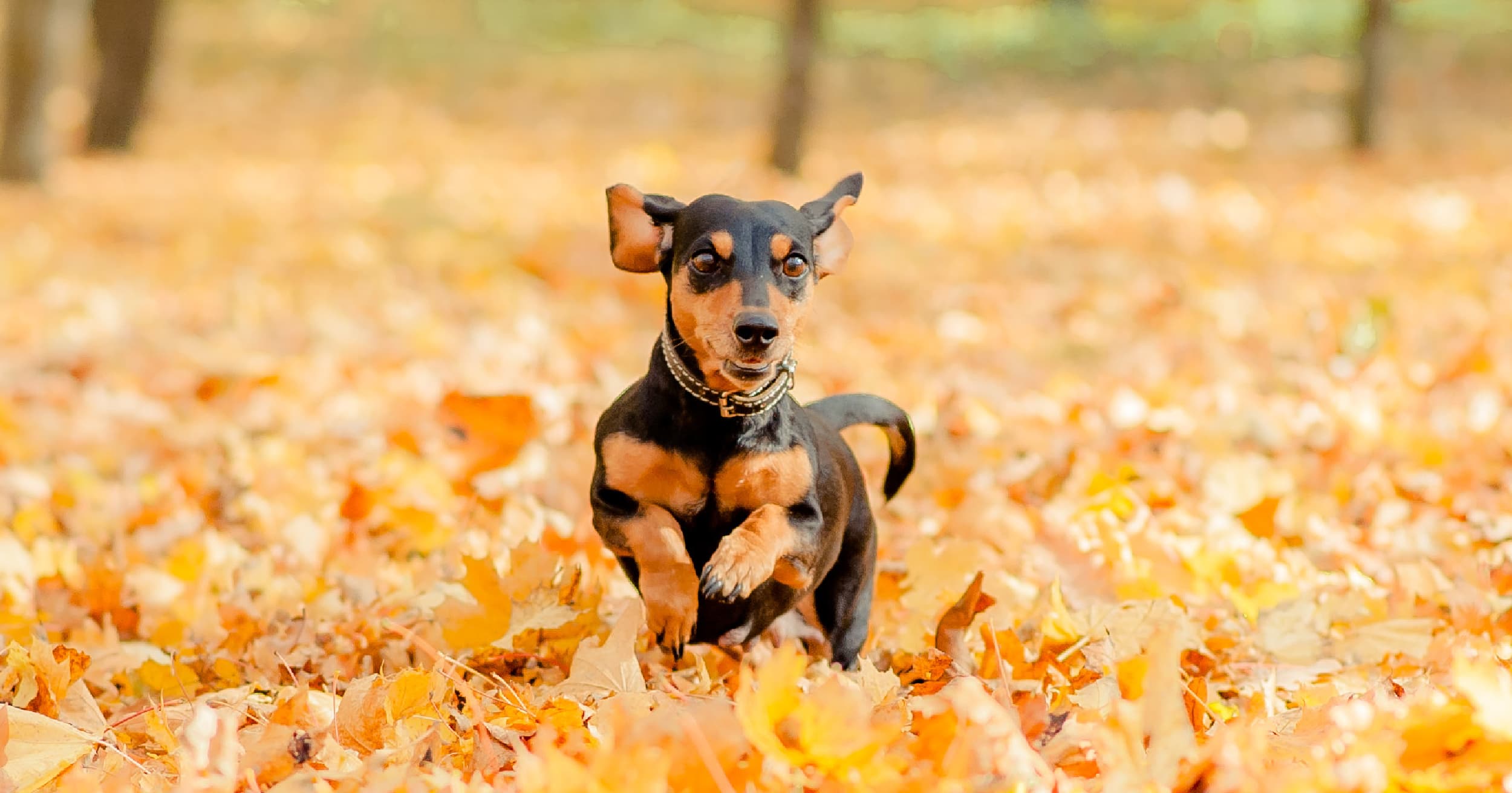If there’s one thing that makes the chore of raking leaves not soooo tedious, it’s seeing your dog’s joy as they take a running leap and disappear into a leafy pile of goodness. Well, until you need to rake the leaves again. And again.
But does your dog spend the night after their leaf pile escapades itching and scratching? If so, it’s possible that they may be reacting to hidden allergens in the leaf pile.
Fleas Love Fall
When the weather gets cooler, you may think that flea season is over. But fall is actually a favorite season of these hardy little pests, and fleas love a good leaf pile. Fleas like shaded, humid areas, so a leaf pile is a perfect place for fleas (and their immature stages) to wait for a dog to come jumping by.
All dogs find fleas annoying, but some dogs are actually allergic to fleas and can develop flea allergy dermatitis (FAD), the most common skin condition in dogs. Not all dogs will develop FAD — they have to be genetically predisposed to it — but for dogs that are susceptible, just one flea bite can expose them to allergens in the flea saliva that creates an allergic reaction. The best way to prevent FAD is to treat your dog with veterinarian-recommended flea protection all year long. Doing so will hopefully reduce your dog’s exposure to flea bites and the allergens in flea saliva.
Mold Spores from Decomposing Leaves
After leaves fall to the ground, they start decomposing. Depending on the conditions, it may be an ideal environment for fungi to help that decomposing process; especially if the leaves are in damp, dark places in the yard. The fungi (mold) produces spores that can cause an allergic reaction in some dogs (and people). So playing in a pile of leaves that’s been sitting for a while or raking up old leaves could release mold spores into the air that cause a reaction in your dog. However, mold can be found in many places, including inside your home, so this might not be the only source of the problem if your dog has a mold allergy.
Pollen, Pollen Everywhere
Spring is typically the season that people associate with pollen allergies, but depending on where you live, fall is weed pollen season. Weeds like ragweed, sagebrush and wormwood release their pollen into the wind and cause many a household to be filled with sneezes and watery eyes. Dogs are no exception. They can also be allergic to pollen and, in some cases, multiple types of pollen. If your leaf pile has been sitting for a little while, it may have a layer of pollen on it that gets stirred up when your dog starts playing in the leaves, causing a reaction.
Allergy Signs in Dogs
Dogs with environmental allergies are usually itchy — really itchy — which often leads to skin problems. In some cases, all that itching, scratching, scooting and chewing can lead to skin trauma, bald spots, abnormal odor (smelly body parts) and secondary infections from bacteria or yeast. Itchy ears and recurrent ear infections are often associated with allergies, too.
If you think your dog has environmental allergies, your veterinarian will take a detailed history, perform a physical exam and conduct some tests to exclude other causes of the symptoms. They may also recommend a visit to a veterinary dermatologist. Once they know the cause, your veterinarian can prescribe a treatment specific for your dog.
One of the best ways to manage allergies is to minimize exposure to the allergen. So, if it is truly the leaf pile causing your dog’s allergy symptoms — bye-bye leaf pile.
RELATED POST: Good Fall Safety in the Great Outdoors








